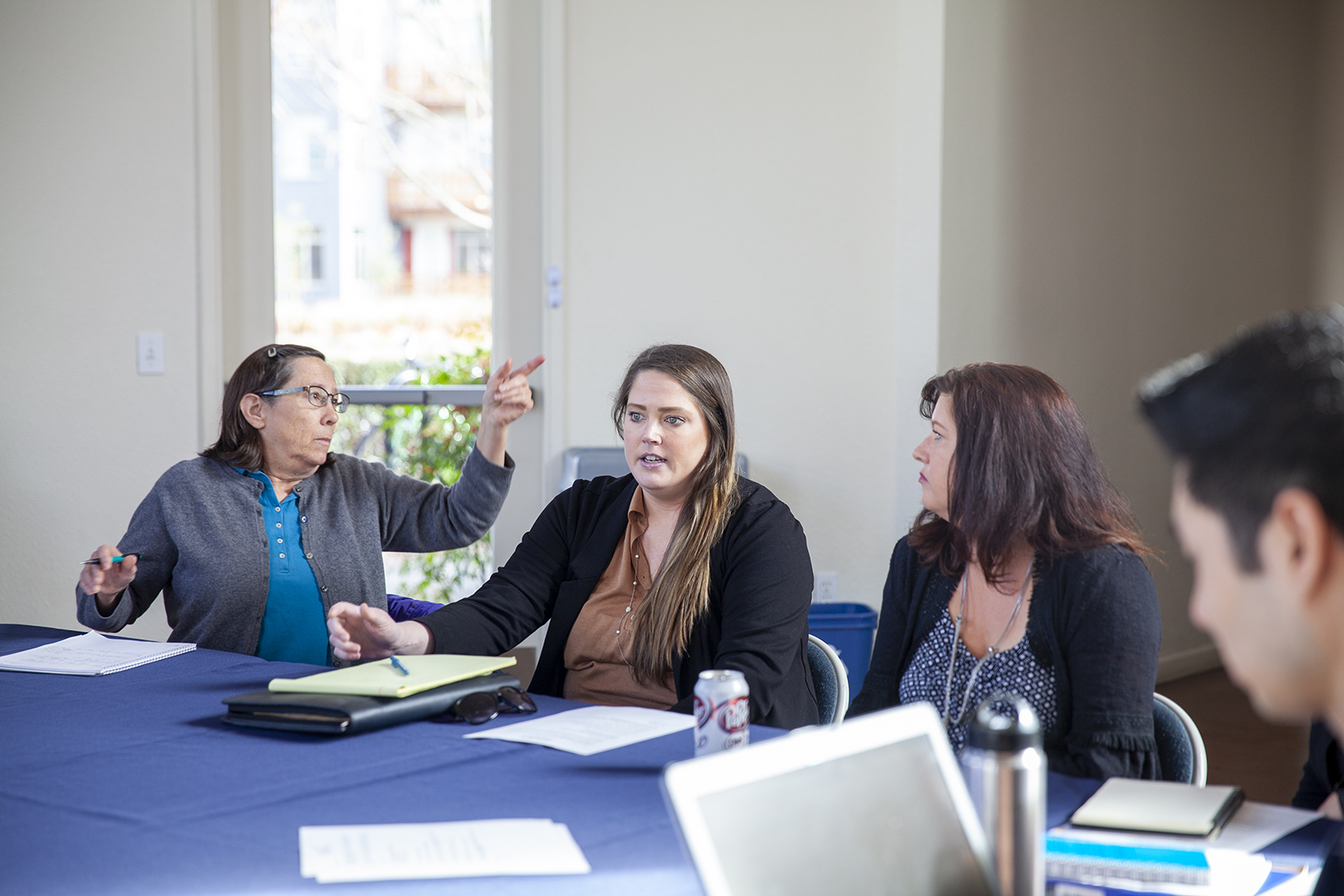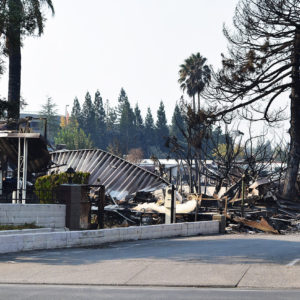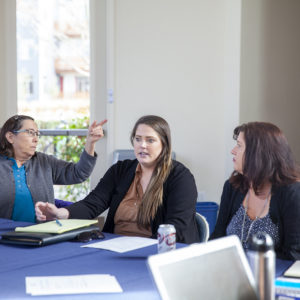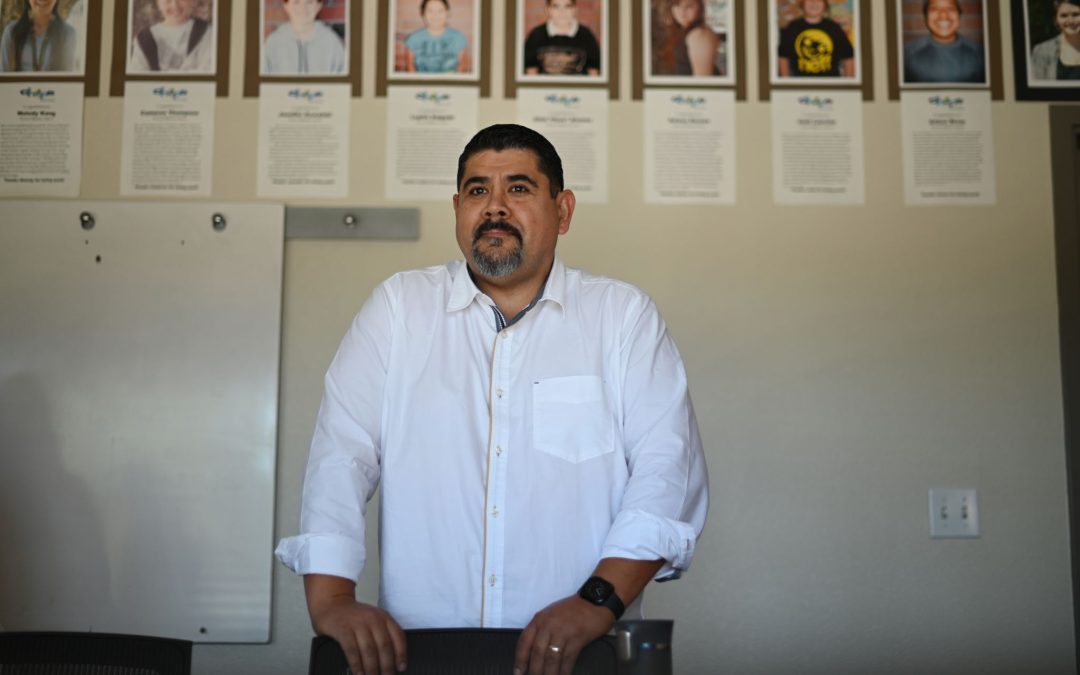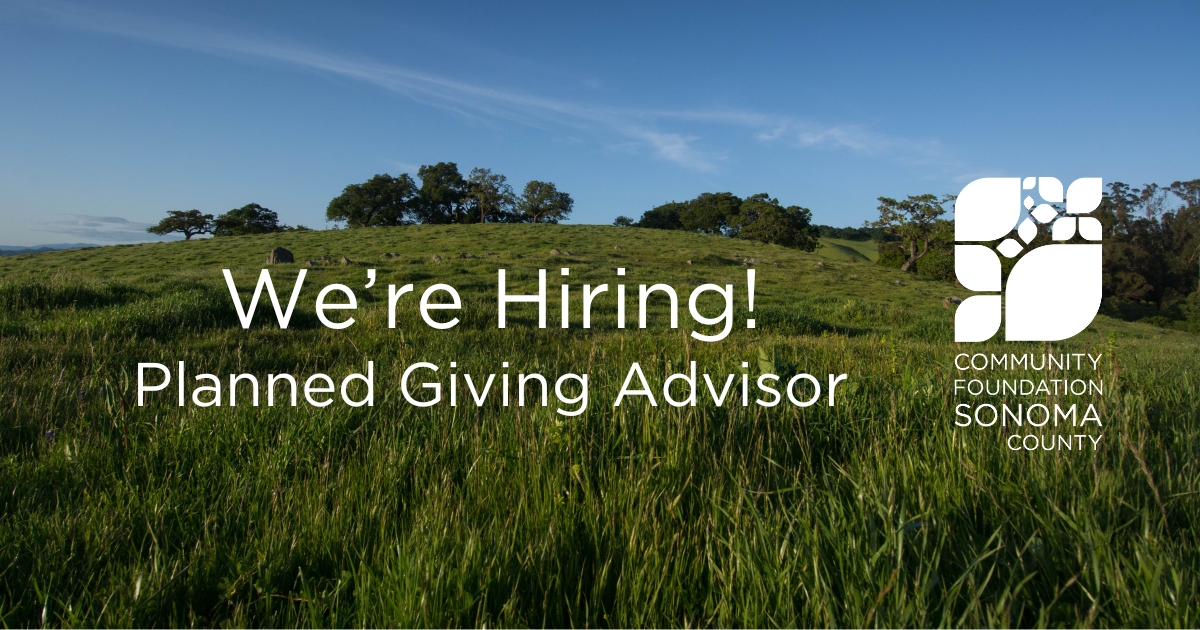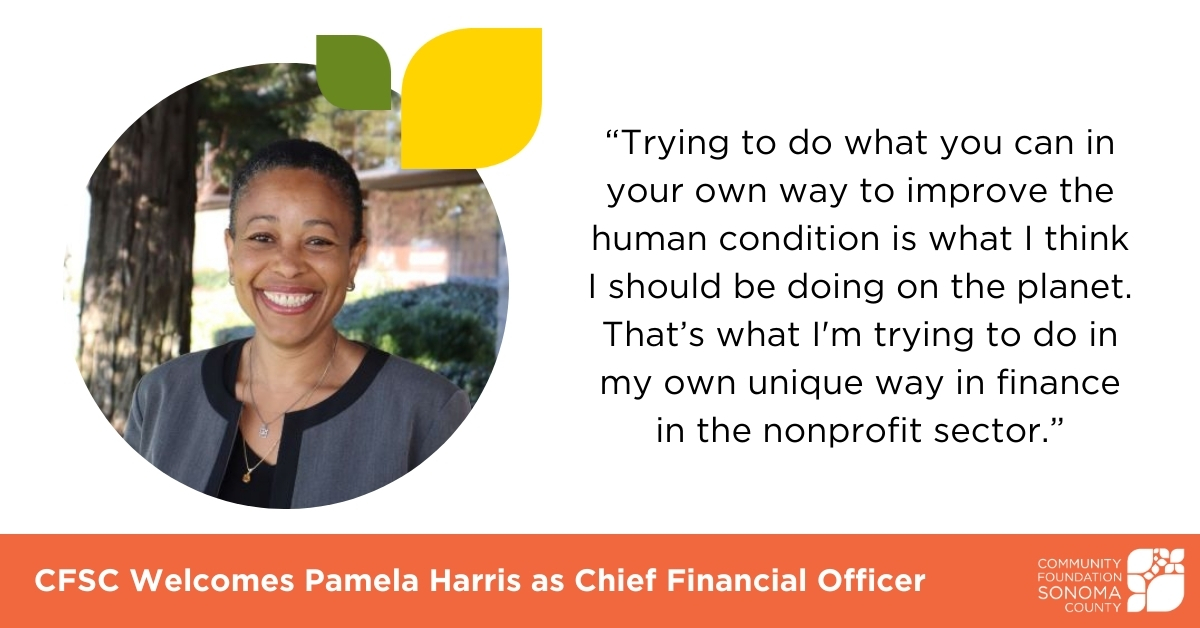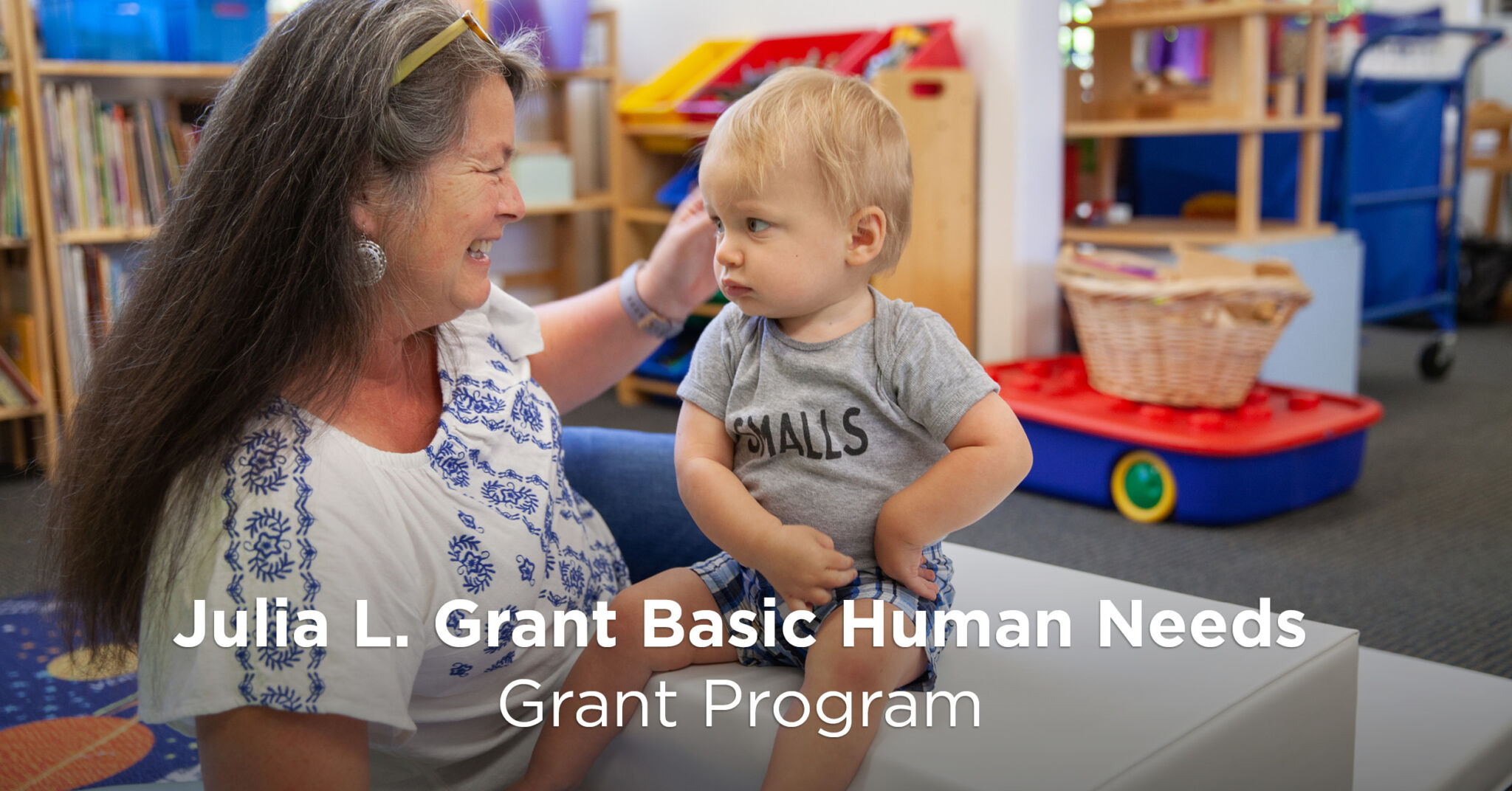When Legal Aid of Sonoma County set out to assist residents of the Journey’s End mobile home park after the 2017 fires, they didn’t realize how much of a fight they’d be in for. Achieving a settlement for their clients was a lengthy and arduous process. Still, with financial support from Community Foundation Sonoma County, Legal Aid helped the former residents of Journey’s End finally reach a settlement in January, more than three years after the fires.
- Photo by Gary Cedar: https://www.flickr.com/people/press-tree-media/
- Kendall Jarvis of Legal Aid meets with Journey’s End residents after the fire
From the beginning, Legal Aid’s lead disaster attorney Kendall Jarvis says the situation was complicated. Before the fire, Journey’s End in Santa Rosa was home to 161 total units. 44 remained standing after the fire, stranded on a dangerous and uninhabitable condemned lot. Eleven of the homes were owned by and rented out by the park owner. The remaining 33 were privately owned. Two owners were uninsured, but most had policies with various insurance companies, including a handful who used Foremost Insurance, an offshoot of Farmers.
As most have become aware of in recent years, there are enormous disparities between who is impacted and who obtains relief during and after disasters. For Jarvis, the situation at Journey’s End was another stark reminder.
The owners at Journey’s End were retirees, many of whom on fixed incomes and with little savings. “By and large, everyone in that park has some qualification of vulnerability,” says Jarvis. “It became apparent very early on that the 44 were going to struggle in a different way [than the owners whose homes were destroyed in the fire].”
“This is like a classic David and Goliath story,” says Legal Aid of Sonoma County’s Executive Director Ronit Rubinoff. “It’s because of funders like Community Foundation that the Davids in the world have a voice and are able to stand up to the oppressions that are represented by the Goliaths of the insurance industry.”
Legal Aid launched their disaster program with support from Community Foundation in 2017, and Jarvis jumped in to help fire survivors while the flames were still burning. As she began working with the Journey’s End fire survivors she recognized the unique situation for the residents of the 44 homes that were still standing. Their insurance companies would not recognize their loss, despite the fact that the owners were barred from returning to their homes.
The fires left the remaining standing homes without access to running water, gas, electricity, and heat—infrastructure that was destroyed throughout the entire property—and all arguably necessary for safe and healthy habitation. Furthermore, there was additional concern about toxicity. The EPA (Environmental Protection Agency) conducted debris removal testing and identified a number of carcinogens, including asbestos, after the fire. Mobile homes, Jarvis points out, are not made to sustain the fire’s extremely high temperatures or the high pressure of the water used to defend nearby Kaiser Hospital from the flames engulfing the park.
Despite this, both the insurance industry and FEMA claimed that the residents did not have valid loss claims because the mobile homes were still standing.
“When you see that park through all the different stages, before debris removal, after debris removal,” says Jarvis. “There is just no question in my mind; it’s so obvious that the properties were not habitable.”
Many former residents of the 44 remaining mobile homes were elderly and/or living with disabilities and other health issues. Left out of traditional avenues for disaster relief, former residents faced barriers to finding temporary shelter while waiting to secure affordable long-term housing. A few were able to receive IHP (Individuals & Households Program) support because they were renters and qualified for shelter in FEMA trailers. The remaining could have easily fallen through the cracks.
Legal Aid stepped in to represent many of the residents, helping them connect with emergency resources while pursuing a court decision. “The Community Foundation gave a significant grant to prevent those people from being homeless,” says Jarvis. “If the Community Foundation hadn’t stepped forward and filled that hole, who knows what would have happened to those people?”
As Legal Aid of Sonoma County continued work on the case, the insurance company dug in their heels. Eventually, Jarvis solicited outside help from attorneys at Kornblum, Cochran, Erickson & Harbison, LLP. With this additional support, Jarvis was able to move forward with a lawsuit against Foremost Insurance, filed in 2019, close to the fire’s second anniversary.
Fortunately, U.S. District Judge William Alsup agreed with Jarvis: permanent lack of habitability deemed former residents eligible for their claims. In December of 2020, a federal judge approved a $686,786 settlement for the residents who had sued Foremost.
The path to reach this resolution was met with numerous obstacles. One of the biggest, according to Jarvis, was getting people to see beyond the stereotypes of who lives in mobile home parks. “Humanizing them and understanding their stories and who they are is such a big part of being able to get justice for them,” she says.
“This group of clients really represents the most vulnerable and most impacted people through the fires,” adds Rubinoff. “So for us to have a positive resolution for these people and to be able to take them over this hump of recovery, that represents the resilience of our community as a whole. They’re the last clients that should have had to wait three years to recover. They’re the least able to have survived this long to make it through the recovery. Yet, they’re the ones that had to wait three and a half years.”
Of the ten former residents Legal Aid of Sonoma County represented in the case against Foremost Insurance, half remain in Sonoma County today. One died not long after a decision was made in the case, and the others have left the county.
“I didn’t know at the beginning that we would have this much of a difficult time pushing through,” says Jarvis. “But it does go to show that if you have the funding to continue the work and you’re willing to be persistent, you can ultimately prevail.”
Story by Dani Burlison photos by Gary Cedar and Caitlin Childs

